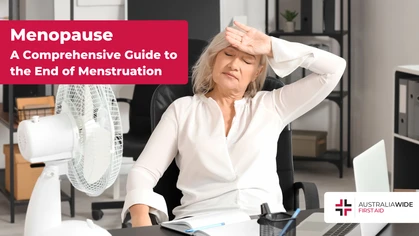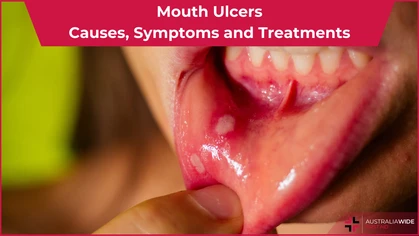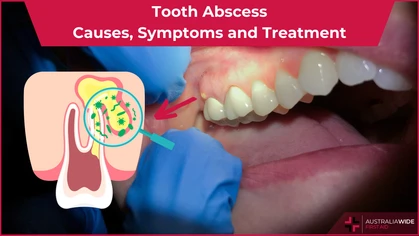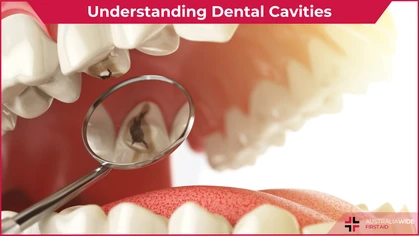A Guide on Transcutaneous Electrical Nerve Stimulation (TENS)

General Health-Related
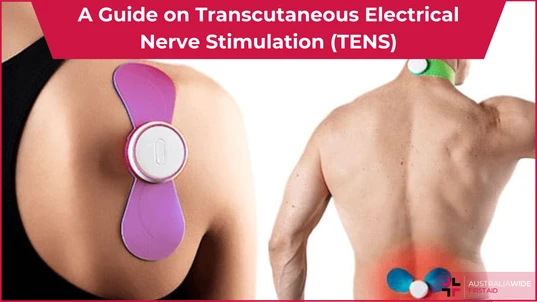 Transcutaneous Electrical Nerve Stimulation (TENS) is a therapeutic method of pain relief. It utilises an electrical device that emits electrical currents and streams the impulses via electrode patches attached to the skin. This electrical stimulation works based on various analgesic mechanisms, including the pain gate mechanism and endorphin Release Theory.
Furthermore, TENS therapy presents a multitude of benefits to users. It is versatile, non-invasive, drug-free, and complimentary.
With advancements in technology and medical research, more pain management options are more accessible to everyone. TENS for pain relief is one such treatment that is gaining popularity in the medical community. It is a safe and effective solution for managing pain.
It can also address various characteristics of pain or medical conditions. Individuals can undergo therapy at pain clinics or purchase a device for home use.
Transcutaneous Electrical Nerve Stimulation (TENS) is a therapeutic method of pain relief. It utilises an electrical device that emits electrical currents and streams the impulses via electrode patches attached to the skin. This electrical stimulation works based on various analgesic mechanisms, including the pain gate mechanism and endorphin Release Theory.
Furthermore, TENS therapy presents a multitude of benefits to users. It is versatile, non-invasive, drug-free, and complimentary.
With advancements in technology and medical research, more pain management options are more accessible to everyone. TENS for pain relief is one such treatment that is gaining popularity in the medical community. It is a safe and effective solution for managing pain.
It can also address various characteristics of pain or medical conditions. Individuals can undergo therapy at pain clinics or purchase a device for home use.
What Is TENS?
TENS is a form of pain therapy that uses a battery-operated device, commonly called a TENS machine or TENS unit, which deliver electric currents to the nerve fibres through electrode pads placed on the skin. It is widely utilised by healthcare professionals, including physical therapists. TENS therapy is suitable for many individuals suffering from mild to severe painful conditions. TENS machines come in two primary types: wired and wireless. Wired TENS machines are the traditional models. The device connects the electrodes to the central machine via lead cables. Meanwhile, wireless TENS machines offer greater flexibility and convenience. They operate without physical wires and can be controlled remotely. Thus, this feature allows users to move more freely and wear the device discreetly under their clothing. Regardless of the type, TENS machines typically share several key features. Most TENS devices have adjustable settings that enable individuals to customise the pulse frequency, intensity, and duration. Also, some advanced models have pre-set programs that can target various types of pain directly. Additionally, most modern TENS machines have rechargeable batteries, which makes them more economical.How Does TENS Work?
The effectiveness of TENS lies in several mechanisms. Firstly, the endorphin release mechanism comes into play. The electrical pulses trigger the release of endorphins, the body's natural pain-relievers. Endorphins interact with opioid receptors in the brain and spinal cord, reducing pain intensity and producing a feeling of well-being. Secondly, the Pain Gate Control Theory provides another explanation for the efficacy of TENS. According to this, the electrical signals stimulate the nerves in the affected area. The stimulation of these nerves essentially "closes the gate" to pain signals sent to the brain. It works on the principle that non-painful input closes the gate to painful input. Therefore, the brain registers fewer pain messages. Lastly, TENS therapy aids in enhancing blood flow to the treatment regions. The electrical impulses encourage vasodilation, which is the widening of blood vessels. Nevertheless, this process results in increased circulation that facilitates the delivery of oxygen and nutrients to body tissues. Additionally, it removes waste products, which reduces inflammation. Frequencies and Intensities Frequencies in TENS therapy refer to the number of electrical pulses delivered per second, measured in Hertz (Hz). These frequencies can be low and high. Low-frequency (below 10 Hz) stimulates the production of endorphins. Conversely, high-frequency TENS (above 50 Hz) blocks pain messages from reaching the brain. On the other hand, the intensity of the electrical pulses, measured in Milliamperes (mA), determines the depth and strength of the electric nerve stimulation. The intensity must be set to a firm yet comfortable level for the individual—not too low or too high.Benefits of TENS Therapy
TENS offers a versatile approach to pain management. It can address various pain characteristics, making it suitable for a broad audience. Furthermore, TENS therapy provides a non-invasive solution. TENS works externally through the skin. It eliminates the risks associated with invasive methods, particularly prolonged recovery periods. Another significant benefit of TENS treatment is its drug-free nature. It allows users to avoid the potential side effects and dependency risks associated with prescription medications. The ability to customise treatment sessions is a crucial advantage of TENS therapy. Users can adjust the settings to their comfort level and pain relief needs. It ensures a tailored therapy experience for each user. Moreover, using a TENS machine can be cost-effective over time. It reduces the need for ongoing medication purchases or frequent medical appointments. Also, the compact and portable design of TENS devices allows users to carry and use them wherever they go. Additionally, TENS treatment can serve as a complementary therapy. It enhances the effectiveness of other medical treatments or therapists.
Types of Pain Treated with TENS
TENS therapy can manage chronic pain conditions (persistent discomfort that lingers for long periods of time). Such conditions include fibromyalgia, backaches, and arthritis pain. Accordingly, TENS is equally effective in addressing acute pain (sudden and severe pain). Acute pain often results from postoperative pain, labour pain, tension headaches, and injuries. Additionally, TENS offers significant relief to musculoskeletal pain (stems from conditions affecting the muscles, bones, ligaments, and tendons). This pain may involve rheumatoid arthritis and osteoarthritis. Furthermore, TENS treatment can aid neuropathic pain (characterised by nerve damage), such as phantom pain and diabetic neuropathy.Conclusion
Overall, the history of Transcutaneous Electrical Nerve Stimulation became visible in the 20th Century and over the years, TENS therapy has adapted to the digital age. Nevertheless, TENS is a method of pain relief. It uses a wired or wireless electronic device to deliver electrical impulses to the body via electrodes placed on the skin. These currents work through various mechanisms. It blocks the transmission of pain signals to the brain, prompts the release of endorphins, and enhances blood circulation. Furthermore, TENS machines can stream electrical pulses in varying frequencies and intensities. The frequencies can be low or high, and the intensity should be adjusted to a comfortable level. Moreover, TENS presents various benefits. It is versatile, non-invasive, drug-free, customisable, cost-effective, compact, and portable, and it can be a complementary therapy. TENS can also treat various types of pain. It can manage backaches, tension headaches, osteoarthritis, and diabetic neuropathy.
Originally published at
https://www.australiawidefirstaid.com.au/resources/a-guide-on-tens
as part of the Australia Wide First Aid Articles Library

